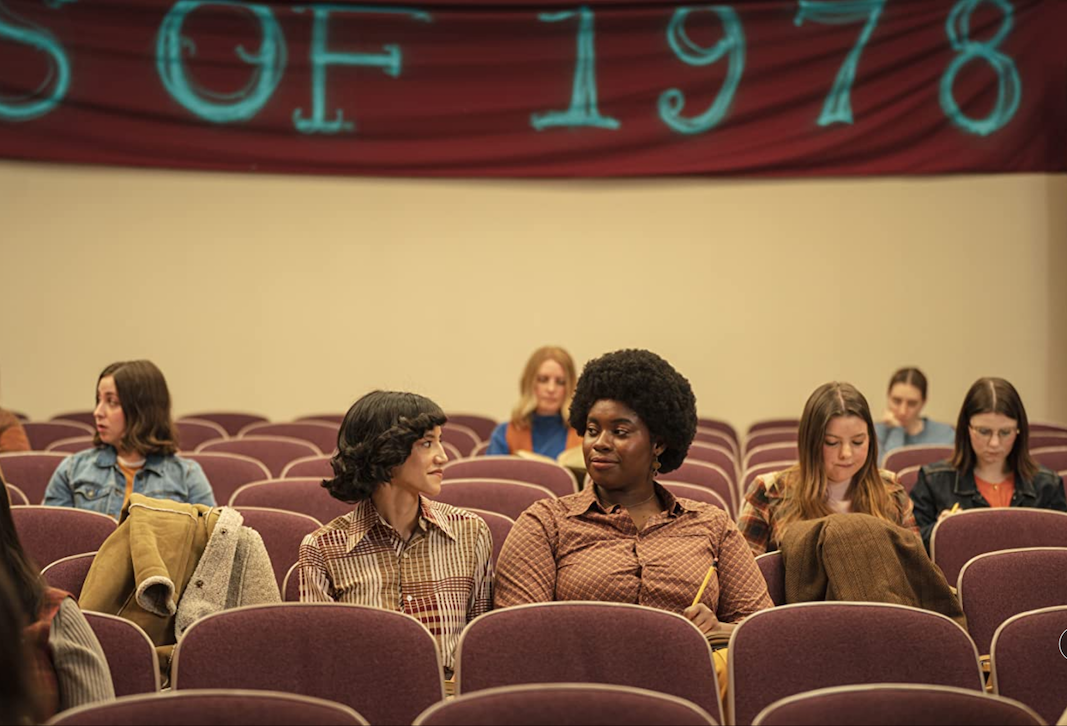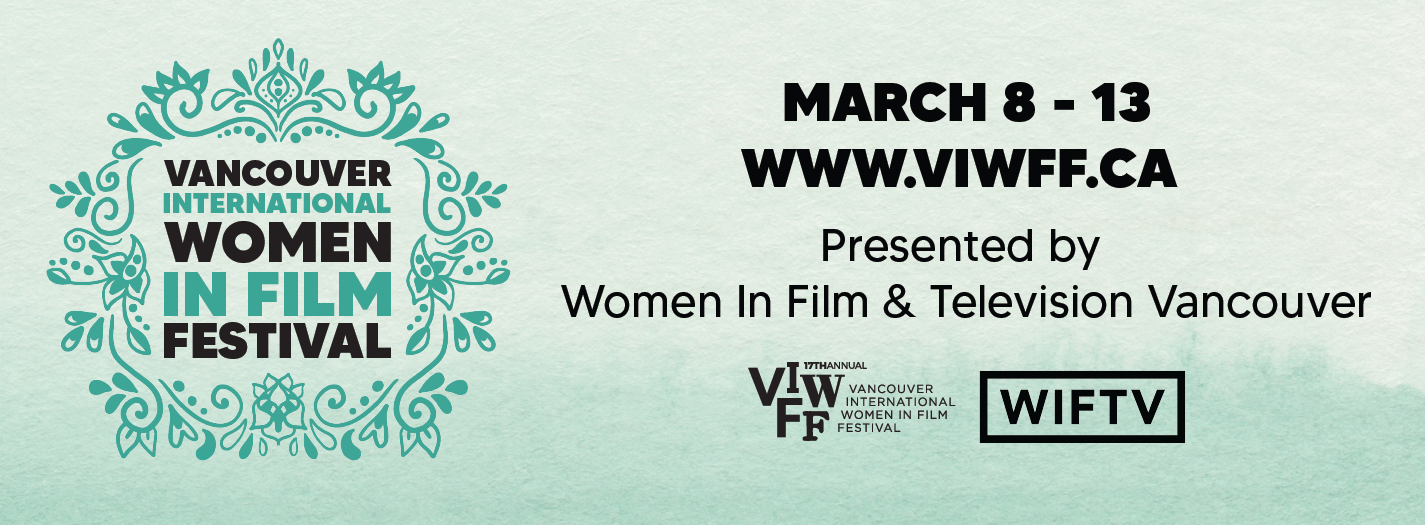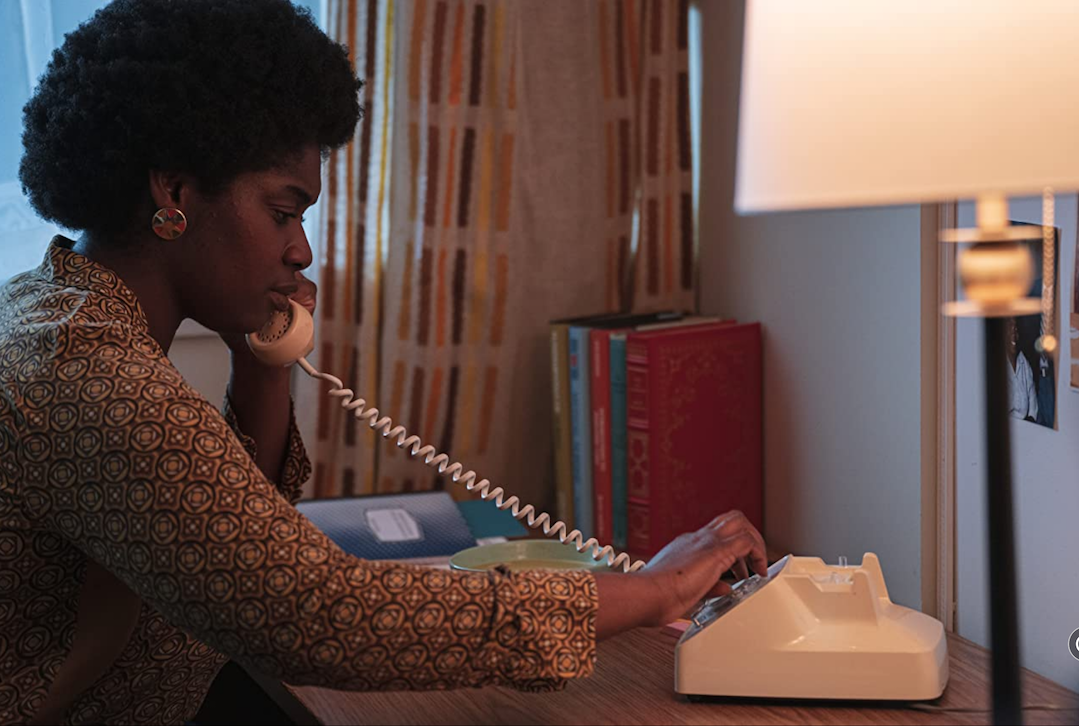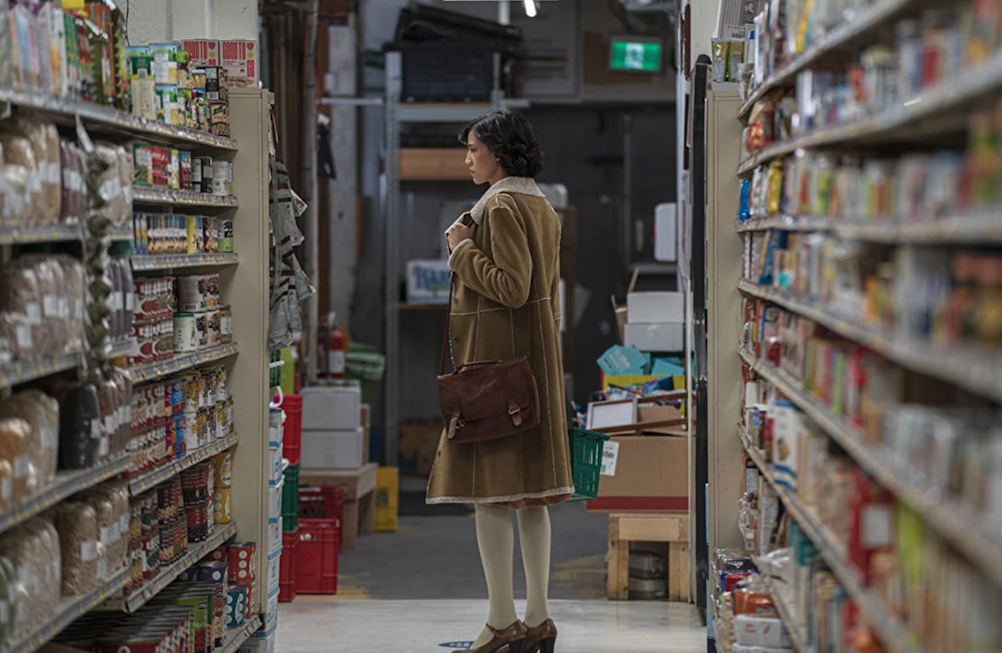In life, it’s difficult to know if you’re on the correct path. When you would rather walk, you are forced to leap and change your trajectory. Your path becomes a field and nothing is familiar anymore. You’ve just immigrated to another country and you don’t know if you can be happy again. Whatever the reason for bringing you there, you must forge on and wear a brave face. Sacrifices were made and you can’t let them be in vain. Immigrating alone to a new country and navigating your way into the system, the network, culture and language can be a lot to absorb and very intimidating. Compounded on top of that, are individuals telling you to ‘go home!’ Somehow, you shake off the verbal assault/racism and the incident begins to fade from your mind… and then it happens again. The pain can cut deep and leave scars, emotional ones. When you begin to question if life is fair at all, serendipity strikes and you find your answer in a new friendship.
Esther & Sai is a short film about 2 women that have both recently immigrated to another country like Canada. They are homesick, they’re hungry and they’re new students that meet each other in class and form an unbreakable friendship that lasts over 40 years. It was written, co-directed and stars Rosie Choo Pidock and co-directed with Anasïa Visser. It was produced by Jesse Copeland and Jon Warne. Both of these ultra talented women won for best directing at Vancouver Short Film Festival – Directors Guild of Canada Award, Women in Film and Television Impact Award.
I watched this film and I felt like I was able to step into an immigrants’ shoes for a brief moment in time until the credits started to roll. This is a beautiful short film that reminds us that all is not lost in the world if you can find a true friend to help you overcome life’s bumps. It also peels back the dark layer of society that sees indifference as a target for unprovoked ignorance. Although the film is short on length and dialogue, the message is long lasting. A story of new discovery, faced with some harsh realities that are overcome with the support of a new life-long friend. This story is based on the life of Rosie’s mom Sai and her best friend Esther.
I had the outstanding pleasure of speaking with the writer, co-director and star, Rosie Choo Pidock and co-director Anasïa Visser. It was incredibly inspiring. Roll the tape!
HNMAG “Congratulations on a great film. This is based on two real people that formed a relationship through immigrating to the same country. How did this story come to light?”
ROSIE “The story is based on my mom, a Chinese immigrant from Singapore and her best friend Esther, an immigrant from Nigeria.”
HNMAG “Did your mom tell you the story about her meeting Esther for the first time?”
ROSIE “Esther has always been in my life since I was a child. After they had met at nursing school, they both ended up teaching together at Douglas College after working in nursing. Esther was always at my birthday parties, at the office when my mom would bring me and I’d often go to her home. I’ve always been interested in stories of friendship and solidarity. After losing my mom (Sai), I became interested in telling a story on immigration and mental health, as well as the impacts of racism on a persons’ self worth and how debilitating it can be – particularly for women that start families and sacrifice a lot of their own self-identity and self-image for white supremacy, for their families, for their workplace. I was always drawn to their bond and Ether was one of the last people my mom had seen before she passed away. Esther was there till the end and has remained in my life, offering support and caring for me. Our friendship has blossomed and through all of that, it’s moved me to tell this story.”
HNMAG “How did you two meet and come to collaborate on this film?”
ANASÏA “I’m the founder of a Facebook group/online network called Women and Gender Diverse Filmmakers of BC. It’s a pretty active space for women and gender diverse filmmakers to exchange, to find each other as well as support. I believe that’s how Rosie found out who I was and what I do. I’m quite vocal about my experiences with depression, mental illness and I’m also an immigrant. The kinds of topics that I value in my filmmaking are stories of mental health, overcoming adversity, struggles on race. I believe those areas of focus are what attracted Rosie to me. She had reached me through the group to tell me that she had a grant from Voices of Impact to make this project. She had already created a beautiful pitch document that won the support of this incredible organization. With Rosie wanting to portray her mom on screen, it was helpful to have a secondary pair of eyes to assist with directing. When I had read the script and the treatment, it really resonated with me and I thought it was such a beautiful story as well as a great opportunity to make it. We got to know each other through working together to bring the film to life.”
HNMAG “Considering that you both co-directed this film, how did you divvy up the directing duties?”
ROSIE “I think Anasïa is being modest. She has more directing experience than I do. She has a resume of films she’s directed, including Bordered – at the Crazy 8’s festival. It was a film about refugees and was the main piece of work that drew me to working with her as a director. I’m coming into the directing from the acting side, which was my entry way into it. While on that path, I became interested in directing. I’d say that a lot of my strengths come from working with actors, understanding the emotional tone of the scene and setting that stage. I was looking to Anasïa to learn more about the technical side of directing, in terms of shot listing, lighting and forming a dialogue with the cinematographer. I was pleasantly surprised in how we worked on every part of the directing together. We were in sync, which was really exciting and fulfilling. I would say that I took the lead in hair, make-up and costume, only because I had a clear vision set out in my pitch package of what the aesthetic should be. It’s a period piece and I had some very good references from film and photos that my mom had taken and I still have. My mom was a very anthropological person – she liked to record things. It’s great, when you’re making a film about her life (laughing) because there was a lot for us to work with.”
Rosie continued to mention that Anasïa took the lead on the shot list and they worked on the edit equally, which included the sound, colour and score. She says it was so fulfilling to bring both sets of ideas to the table, to see what was going to fit the vision and the truth of the story.
ANASÏA “If I could add to that… it was Rosie’s project and vision. I wanted to be there for support but to also give her the answers directors are looking for. I saw myself as a co-director but also as a creative springboard. I wanted to bring a collaborative energy to the project to let her know that her ideas are good, they’re valued and to offer that positive reinforcement, she’s on the right track.”
ROSIE “The last thing I wanted to add to something Anasïa mentioned earlier about taking on the responsibility of portraying my mom (laughing) is something I’ve never done before as a performer. When you tie that into the grief and the healing – I took some advice from my close friends and mentors of not stretching myself too thin. My biggest fear was watching back the footage and not feeling like I fully embodied my moms’ essence and spirit. However, after watching it back I do feel that I did and I’m very proud of that. We made it very clear to the crew that Anasïa is in the director’s chair when Rosie’s in performance mode. This one evening, when we were working with Ivanna Ihekwoaba (Esther), I was able to sit behind the monitor and ‘direct’ but because of hair, make-up and wardrobe, on set – I tended to stay out of the directors chair.”
HNMAG “You had mentioned creating a shot list earlier. Did you also construct a storyboard or have a rehearsal?”
ANASÏA “I had some stick figure storyboards that I do but it’s just as a last resort, if I can’t communicate (laughing). The shot list was really to help us work within our limitations. It was set in the early ‘70’s, so there were certain angles we had to avoid, to maintain the era. We did location scouting together, we did rehearsals, we discussed performances prior to showing up on set and we also did some hair and make-up tests. We were even particular about the food they ate at the end of the film. We wanted to ensure it was culturally appropriate, that it was realistic and would exist in the ‘70’s. Together, we went through all the details in advance. We had 2 shoot days on a university campus and 1 night at a grocery store. How do you make a modern-day grocery store look like it’s in the ‘70’s? We even had discussions on the types of curtains we were going to have in the dorm room (laughing). These are the types of discussions that we had in advance.”
HNMAG “Amazing job! Everything looked so authentic. Where did you find those old product boxes?”
ROSIE “We worked with an incredible designer, Stewart Manson. We would come with inspirational images of cereal that we found on Google from the ‘70’s. We couldn’t use their design for legal reasons, so we had to create our own. In the opening shot inside the grocery store, we had determined we would designate a shelf for the cereal. The Kraft Dinner label was also designed by Stewart and we had the redesigned labels printed as stickers. We put them on modern-day boxes of cereal and Kraft Dinner boxes to look authentic.”
ANASÏA “We also did the Uncle Bens rice, when she was looking at the box in the beginning and wondering where she could get proper rice. Those were all things that took planning. The nursing textbooks had to be designed and planned for. Basically, anything you feature has to be cleared, so we also worked with a clearance house. They were very generous and sponsored the film with clearances, which was another process we had to face. Not many short films would have to do that but because we were so close to real products, it was important that we had clearances to back us up.”
HNMAG “This story takes place in the ‘70’s. Do you believe these women would have a similar experience in today’s current times?”
ROSIE “I would say that the irony of us doing a period piece at a time when there’s been some improvement in social justice and anti-racism – in many ways, it hasn’t gotten better. Our film really focuses on micro-aggressions, which can cut smaller but deeper than someone telling you to go back to your country. It can really impact feelings of self worth, your mental health and your feelings of belonging. I want to draw out that theme through the development of a series. We only get to meet them in the short film but their friendship lasted 40 years, so there’s lots of source material to work with. In a lot of ways, we still have a long way to go in terms of addressing some of the more subtle things that are going on.”
HNMAG “I’ve looked at your Imdb page Anasïa and you’re listed as producer on many projects. Why did you decide to forgo the producing on this film?”
ANASÏA “I try really hard to not direct and produce at the same time. Directing is a full on job and to do it well you really don’t want your focus to be split. We were both very lucky in having Jon (Warne) and Jesse (Copeland) because they’re both very experienced in Indie film and are well connected. They really gave Rosie and myself more freedom to direct. In addition to keeping a lot off of our plates, they would also fill in the background when we needed more bodies. They even moved furniture back and forth to the dorm room with a golf cart.”
HNMAG “How did they get involved in the project?”
ANASÏA “I often work with Jon. He’s my life partner and producing partner. Rosie had mentioned that she was looking for a producing partner as well and the person that produces most of my work is someone I trust with all of my projects, my life and my cat (laughing). He was looking for more producing opportunities at the time and he’s a really delightful person to work with. He’s got this really good energy about him and Rosie knew Jesse, so we decided to have them work together.”
ROSIE “You’re sometimes taking a huge risk and we did look at established producing teams. I met Jesse at a pitch for Crazy 8’s about 4 years ago and we connected. We met up another time at a nightclub and had another really good connection and then ended up working on the same Crazy 8’s project. It was through that same team, we ended up on another project together. I really had a chance to observe his demeanor. Although he’s very unassuming, he’s incredibly skilled, very detail oriented and very humble. I trusted that Jesse would give his input where it was needed but he wasn’t going to interfere in the intimate and emotional details of the story. When Anasïa mentioned she wanted to bring in her partner Jon, I thought it could go horribly wrong or it could be incredibly well. Thankfully it was the latter and I now consider Jon a friend. So many of the people I worked with on this project are now my close friends and that’s the biggest gift. Not only do you get to go on working with these people but you also bring each other joy from your love of cinema and shared values. It’s been a huge blessing.”
HNMAG “Going forward, do you both have projects you’re working on?”
ANASÏA “I’ve written a feature that I’m currently trying to find funding for, so I’m working on the packing stages of that. It’s a comedy/drama about 2 people that find each other in their journey to overcome their grief and guilt associated with some difficult losses in each of their lives. You can find a great connection in the aftermath of a great loss with people that have been through similar experiences.”
ROSIE “I’ve been busy focusing on packaging Esther and Sai as a series and the great thing about going through Voices of Impact is the built-in audience because they’re all online films about immigrants and Black mental health experiences. We premiered our film there and people were chiming in online, saying they’d love to see a series with these ladies. It’s been great market research and data that we can bring to funders to show that people are hungry for more of the story and they’ve added the 5 min cut to their Olive collection, which is the largest collection in the world of short films dedicated to mental health. They use these films ongoing in mental health workshops with college and university students across North America. It’s great to know that it’s being used in this educational and healing setting to allow more BIPOC and immigrant folks to have a dialogue about their mental health. Whenever it screens, people continue to provide feedback and say they want more of the story, so that’s where I’m focusing my energy at the moment.”
An incredible film that offers the audience a window into a newly landed immigrants’ journey. Knowledge is power and most of the country is made up of immigrants from a previous generation or current. We all have the right to live our lives without prejudice and without racism. Esther & Sai is a prime example of fitting in and finding a connection.




